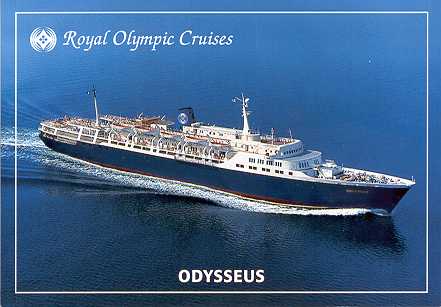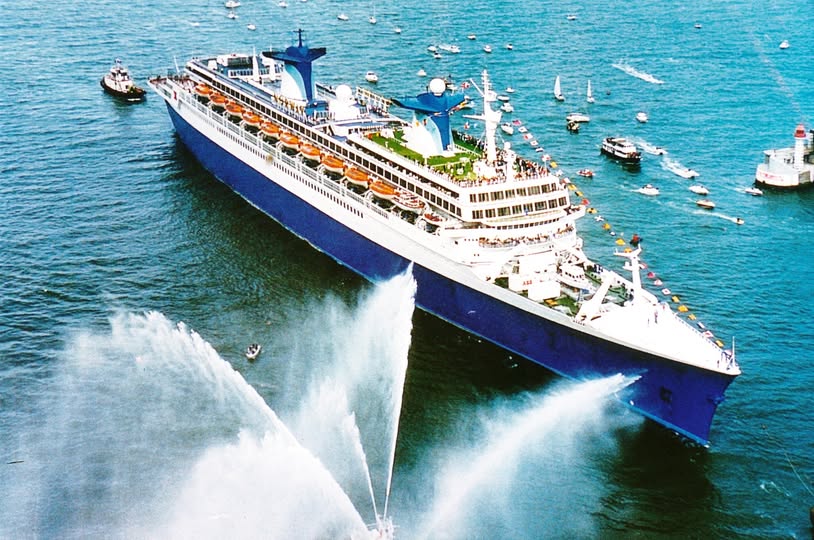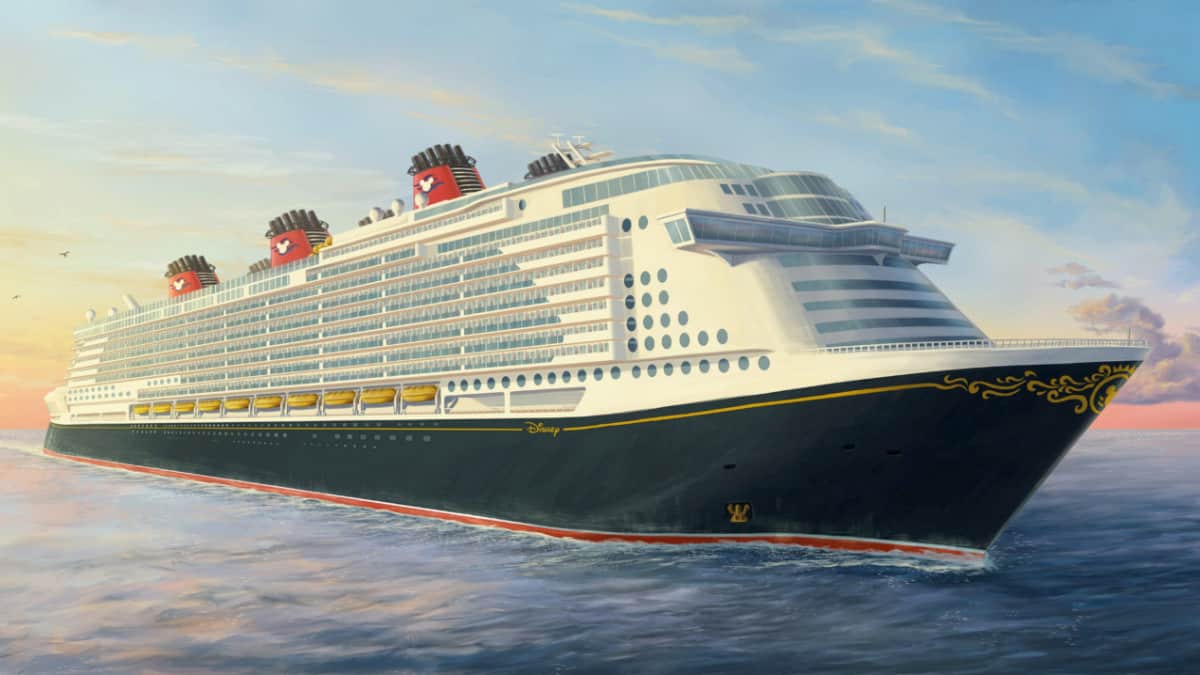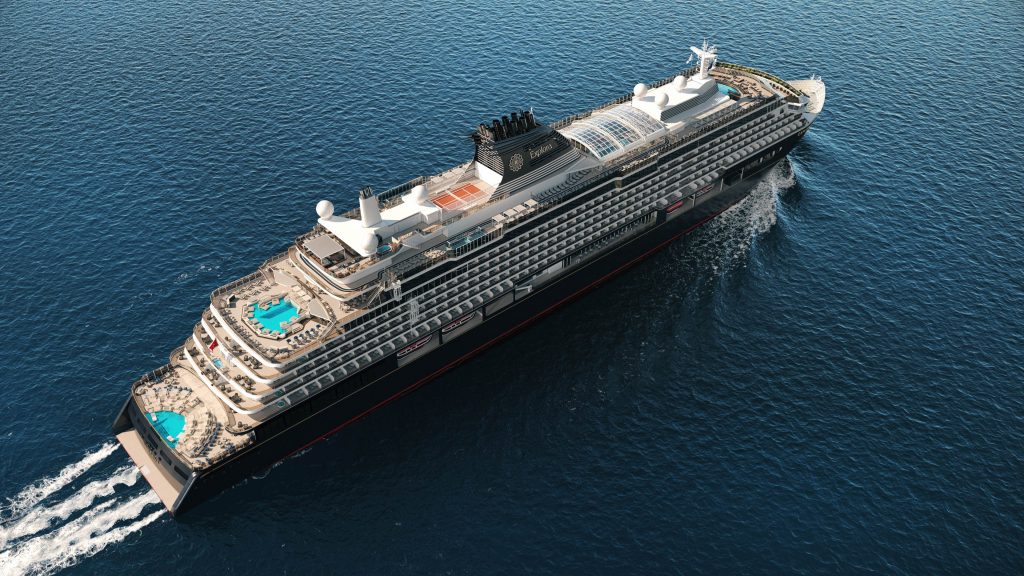The Princesa Isabel was launched on January 18 1961 at Cia. Euskalduna, Olaveaga in Bilbao, Spain and was delivered to her Brazilian owners Cia. Nacional of Nav. Costeira in August 1962.
This small 9,696GRT vessel was very pleasing to the eye with her flared bows, modern looking and well-balanced superstructure and midships placed dark blue funnel with the company’s Patee Cross on both sides. Propulsion was by two slow speed B&W diesels giving her a service speed of around 17 knots. Being a compact ship the two Denny-Brown stabilizers fitted were no unnecessary luxury.

She carried her passengers in 170 cabins in two classes First Class had 29 two and 46 three berth cabins for 200 passengers, while her 280 Tourist Class passengers were mainly accommodated in four berth cabins. According to demand, 25 two berth cabins were interchangeable between First and Tourist classes as required.
Her interiors were quite luxurious with air conditioning, and the standard facilities of those days like a main show lounge, restaurants and smoking rooms (both for First and Tourist class), bars but also a library/ writing room, hairdressers, gymnasium, ample deck space and even two pools again one for each class.
Being a working passenger ship, she also carried cargo in two holds situated forward with a capacity of a 72,500 cu. ft.


Two months after the launching of the Princesa Isabel the Princesa Leopoldina was launched on March 17, 1961 and taken into service in October 1962. Both these vessels had been built at a cost of USD 10 mio.
She and her sister ship Princesa Leopoldina sailed along the the South American coast often starting at Buenos Aires calling at ports on the Amazon river, like Belem and even as far upstream as Manaus as well as Rio de Janeiro, Santos, Montevideo.
Both these pretty ships were a mediocre success at best, passenger levels were only just acceptable. They were subsequently employed as cruise ships also with only average results.

And of course in this part of the world also, liner service came to an abrupt end as more and more of her passengers decided to fly and her owners rapidly experienced serious financial difficulties forcing them to merge with state owned competitor Lloyd Brasiliero in 1967. Both sisters were reemployed on the South American coastal service between Buenos Aires and Rio de Janeiro again but this lasted just two years.
The Princess Isabela was laid up in Rio de Janeiro early 1968. Apart from her engines which were partly stripped to keep her twin sister going, she was well maintained and had of course plenty of life left in her being a relatively young vessel of just six year old. But it still took one and a half years to get her sold. It was the Dominion Far East Line (a joint venture of Australian owners J. Swire and H C Sleigh) who finally acquired her.

In September 1969 she departed from Rio de Janeiro under tow by the Dutch tug Jacob Heemskerck. She was then refitted in Scotland at the River Clyde. Her engines had to be restored to working order and also her interiors were entirely rebuilt. She emerged as a one class cruise ship carrying 370 passengers in all outside cabins apart from 6 interior staterooms. On all of her 5 passenger decks, in her spacious interiors, public spaces as well as staterooms only materials and furnishings were used of the very best quality. In all this took 7 months.
Her hull was repainted to a grey-blue, with a white superstructure with red boot topping. Her radar and aft mast, kingposts, and derricks were painted in a red-brown colour while her funnel was changed to Dominion Far East colours of red with a black top.

Renamed Marco Polo and reflagged to the British flag, she was redelivered June 1970.
Now mainly serving the Australian market, she immediately departed on her first cruise from Melbourne on June 26, 1970. She would stay here sailing to the Pacific area and also sailing from or calling at Asian ports like Hong Kong or Singapore. At the time she was a very popular intimate luxury cruise ship without any serious competition.
In 1973 the Marco Polo was overhauled and upgraded again in Hong Kong, where a cinema was added. She did very well and John Swire also acquired her sister ship Princesa Leopoldina, which they renamed Coral Princess.
Suddenly, in June 1978 she was offered for sale, ending her last cruise on 23 August. During this final Asian cruise, Marco Polo was caught in the grip of a typhoon and suffered a punishment for five long days, resulting in a number of injuries amongst her 192 passengers. Over the years. her competition P&O, CTC Cruises and Sitmar had been introducing larger ships with more facilities. She was just too small to compete with them although reservations were still at a very acceptable level.

But, because of her age and compact size her operating costs were high. Arley Nav.Co., on behalf of Greek shipowner Aquamarine Ltd. (in turn a Kavounides owned company) quickly picked her up for a favorable price and they immediately sent her to Greece to be rebuilt at the Khalkis shipyards. In the process she lost her forward holds and goal post as her superstructure was extended forward.
Renamed Aquamarine and reflagged yet again, now flying the Greek flag, she returned to familiar waters making 2-week cruises from Hong to Japan and China starting April 16, 1979. She was now in direct competition with her sister ship Coral Princess (ex- Princesa Leopoldina) which had been acquired by China Navigation (owned by the Swire Group from Hong Kong).

She didn’t attract enough passengers however. Aquamarine was arrested in April 1980 in Hong Kong for unpaid bills where she was subsequently laid up and auctioned off to the Commercial Bank of Greece. She sailed to Greece in July 1981 and was now laid up again in Piraeus. Nothing happened to her for the next eight (!) years. There were plenty of rumours surrounding Aquamarine like a firm with the name Polaris Cruises planning to refit her for USD 3 mio and operate her in the Baltic and to Norway in summer and the Med and the Canary Islands in winter. Also Rasa Sayang Cruises planning to operate her for the next four years out of Sydney, Sun Coast Cruises etc. were mentioned as interested parties but nothing came of it.
Finally in 1988 she was acquired by Epirotiki Cruises from Athens and rebuilt at the Perama shipyard where her superstructure was enlarged yet again, this time towards her stern, while additional cabins were installed between her radar mast and funnel. She was renamed MTS Odysseus and now listed as 12,000GRT.

Interior architect Arminio Lozzi was responsible for her completely redone Mediterranean-style interiors and her capacity was boosted To 496 (maximum) passengers in 226 cabins. April 1989 she started a 3-4-7 day program of Aegean cruises, and during wintertime she repositioned to South America and the Caribbean. She also occasionally operated student cruises. In the spring of 2000 a company called Legend Cruises announced plans for a three-year charter (followed by a purchase option) of MTS Odysseus, cruising from Puerto Plata in the Dominican Republic on 3- and 4-day trips as the Joywave, but these plans did not materialize.
Then, on December 1 1995 Royal Olympic Cruises was formed when Epirotiki and Sun Line merged. Sun Line’s luxury vessels Stella Solaris and Stella Oceanis together with the MTS Odysseus were designated as the luxury vessels of the Royal Olympic fleet. Their hull was repainted blue to distinguish them from the other vessels of the fleet. Royal Olympic wanting to expand applied for state support to build two 920 pax vessels with shallow drafts and specially designed hulls to achieve unprecedented speeds which were actually built at Hellenic Shipyards.

However, due to poor management and the financial burden of the two newbuilds, financial problems emerged and the entire Royal Olympia fleet was laid up in 2003. MTS Odysseus did sail on a couple of cruises in 2004 but was laid up again soon. In 2004 her owners went into liquidation which was the end of the company.
She was sold at auction and was purchased by Mantovana Holdings Ltd, a subsidiary of V-Ships. Everis Capital Holdings leased her to operated her as a casino cruise ship sailing out of Singapore. She was renamed Lucky Star and refitted as a casino ship in Greece leaving her interiors littered with roulette tables and slot machines.
She started sailing out of Singapore on 3, 4 and 7 night gambling cruises, but this venture was short lived. Poorly maintained and in a neglected state she was up for sale after four years and picked up by Indian scrappers. She was beached in the spring of 2008 under the shortened name of Lucky, not quite fitting at this stage of her ending career. Although it was a shame that she had reached the end of her life, probably the new 2008 SOLAS-regulations would have done her in anyway, as a vast amount of money would have been necessary to make her compliant to these new safety rules at sea…..




